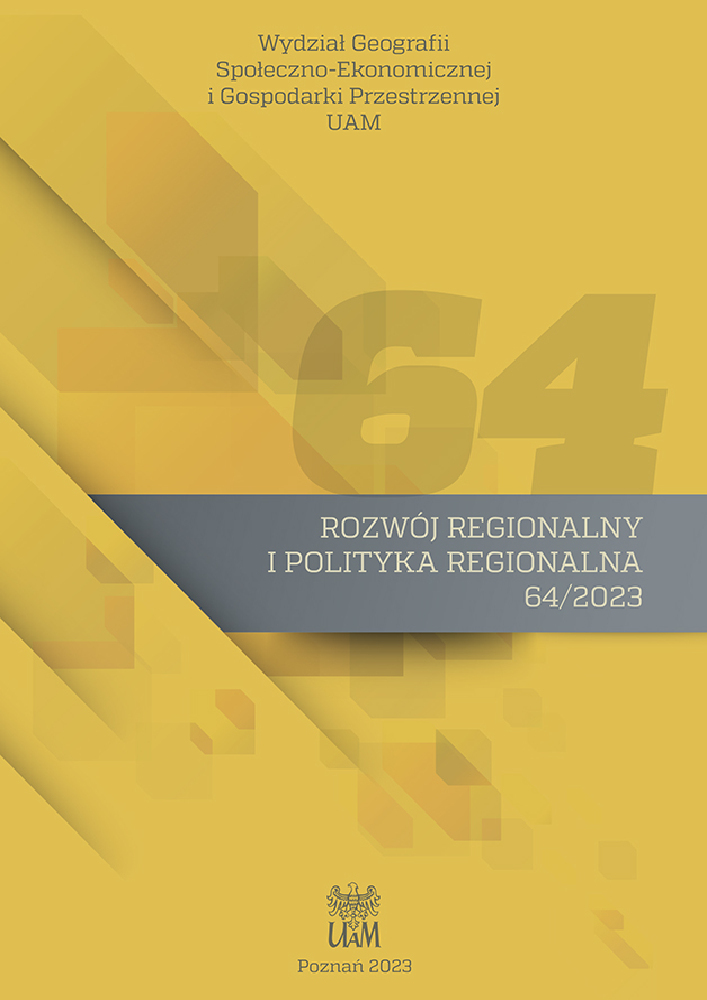Abstrakt
W styczniu 2018 r. została przyjęta deklaracja z Davos „Ku wysokiej jakości Baukultur dla Europy”. Podpisali ją ministrowie kultury wielu krajów europejskich. Baukultur , jako koncepcja kultury kształtowania przestrzeni, obejmuje każdą działalność człowieka zmieniającą przestrzeń zbudowaną i odnosi się do różnych skal. W deklaracji wymieniono osiem kryteriów jakości miejsca: tożsamość, funkcjonalność, różnorodność, ekonomię, środowisko, kontekst, zarządzanie i piękno. Badania dotyczą wybranych miast z dwóch regionów Niemiec – Nadrenii Północnej-Westfalii oraz Meklemburgii-Pomorza Przedniego, takich jak: Kempen, Straelen, Hallenberg, Warburg, Krefeld-Linn, Parchim, Grabow, Güstrow. W artykule opisano kryteria jakości, a w sposób szczegółowy trzy wybrane, dotyczące różnorodności, środowiska i piękna. Wskazano na wiele korzyści dla społeczeństwa, które wynikają z koncepcji kryteriów wysokiej jakości kultury kształtowania przestrzeni. Zwrócono uwagę na całościowe podejście do rozwiązań odnoszących się do przestrzeni publicznej w mieście, rozwoju różnych form terenów zieleni, jak również zagadnień krajobrazowych stref podmiejskich. Holistyczne podejście do przestrzeni zbudowanej w prezentowanych miastach łączy w sobie współczesną architekturę z tkanką historyczną oraz dziedzictwem kulturowym i przyrodniczym.
Bibliografia
Akincza M., Knercer-Grygo U. 2012. Tereny zieleni w przestrzeni miejskiej – fanaberia czy uzasadniona potrzeba? [W:] C. Kardasz, J. Możdżeń, M. Spychaj (red.), Miasto jako fenomen społeczny i kulturowy. Zbiór studiów. Wyd. Naukowe UMK, Toruń, s. 85–96.
Dümpelmann S. 2019. Seeing Trees. A History of Street Trees in New York City and Berlin. Yale University Press, New Haven, London, s. 11–12, 21–42. DOI: https://doi.org/10.12987/9780300240702
Forczek-Brataniec U. 2018. Przestrzeń widziana. Analiza widokowa w planowaniu i projektowaniu krajobrazu. Wyd. PK, Kraków.
Gehl J. 2009. Życie między budynkami. Wyd. RAM, Kraków.
Gehl J. 2014. Miasta dla ludzi. Wyd. RAM, Kraków.
Gehl J., Svarre B. 2021. Jak studiować życie w przestrzeni publicznej. Narodowy Instytut Architektury i Urbanistyki, Warszawa.
Gestaltungshandbuch für die Parchimer Altstadt. 2019. Stadt Parchim.
Krier L. 2011. Architektura wspólnoty. Wyd. słowo/obraz terytoria, Gdańsk.
Lenartowicz J.K. 2020. O etykę architektury. Teka Komisji Urbanistyki i Architektury, 48: 3–33.
Lynch K. 2011. Obraz miasta. Archivolta, Kraków.
Niedźwiecka-Filipiak I, Ozimek P, Akincza M., Kochel L., Krug D., Sobota M., Tokarczyk-Dorociak K. 2019. Rekomendacje w zakresie prowadzenia analiz krajobrazowych na potrzeby wyznaczania stref ochrony krajobrazu. DGOŚ, Warszawa.
Sim D. 2020. Miasto życzliwe. Jak kształtować miasto z troską o wszystkich. Wyd. Wysoki Zamek, Kraków
Sirel A., Sirel O.Ü. 2018. Universal Design – Approach for the Participation of the Disabled in Urban Life. Journal of Civil Engineering and Architecture, 12: 11–21. DOI: https://doi.org/10.17265/1934-7359/2018.01.002
Szczepanowska H.B. 2007. Ekologiczne, społeczne i ekonomiczne korzyści z drzew na terenach zurbanizowanych. Człowiek i Środowisko, 31(3–4): 5–26.
Szczepańska M. 2011. Miasto-ogród jako przestrzeń zamieszkania, pracy i rekreacji – dawniej i dziś. Studia Periegetica, Zeszyty Naukowe Wielkopolskiej Wyższej Szkoły Turystyki i Zarządzania w Poznaniu, 6.
The Davos Baukultur Quality System. Eight criteria for a high-qality Baukultur – the whole story. 2018. [W:] Davos Declaration.
Barrierefreie Innenstadt, Hansestadt Warburg (https://www.warburg.de/bauen-br-wirtschaft/bauen-und-stadtplanung/barrierefreie-innenstadt ; dostęp: 15.12.2022).
Barrierefreiheit für Baudenkmäler und Bestandsbauten. 2018. Denkmalpflege Informationen, 3.
https://www.government-mv.de/Mecklenburg-Vorpommern/ (dostęp: 9.02.2023).
https://www.grabow.de/stadt-grabow (dostęp: 20.02.2023).
https://kempen.de/de/inhalt/altstadtsanierung/ (dostęp: 15.12.2022).
https://www.mecklenburg-vorpommern.de (dostęp: 21.02.2023).
https://ru-geld.de/pl/country/federal-states/nordrhein-westfalen.html (dostęp: 21.02.2023).
Ku wysokiej jakości Baukultur dla Europy (https://www.gov.pl/web/kultura/deklaracja-z-davos---ku-wysokiej-jakosci-baukultur-dla-europy ; dostęp: 15.12.2022).
Licencja
Prawa autorskie (c) 2023 Marta Akincza, Wiesława Gadomska

Utwór dostępny jest na licencji Creative Commons Uznanie autorstwa 4.0 Międzynarodowe.

